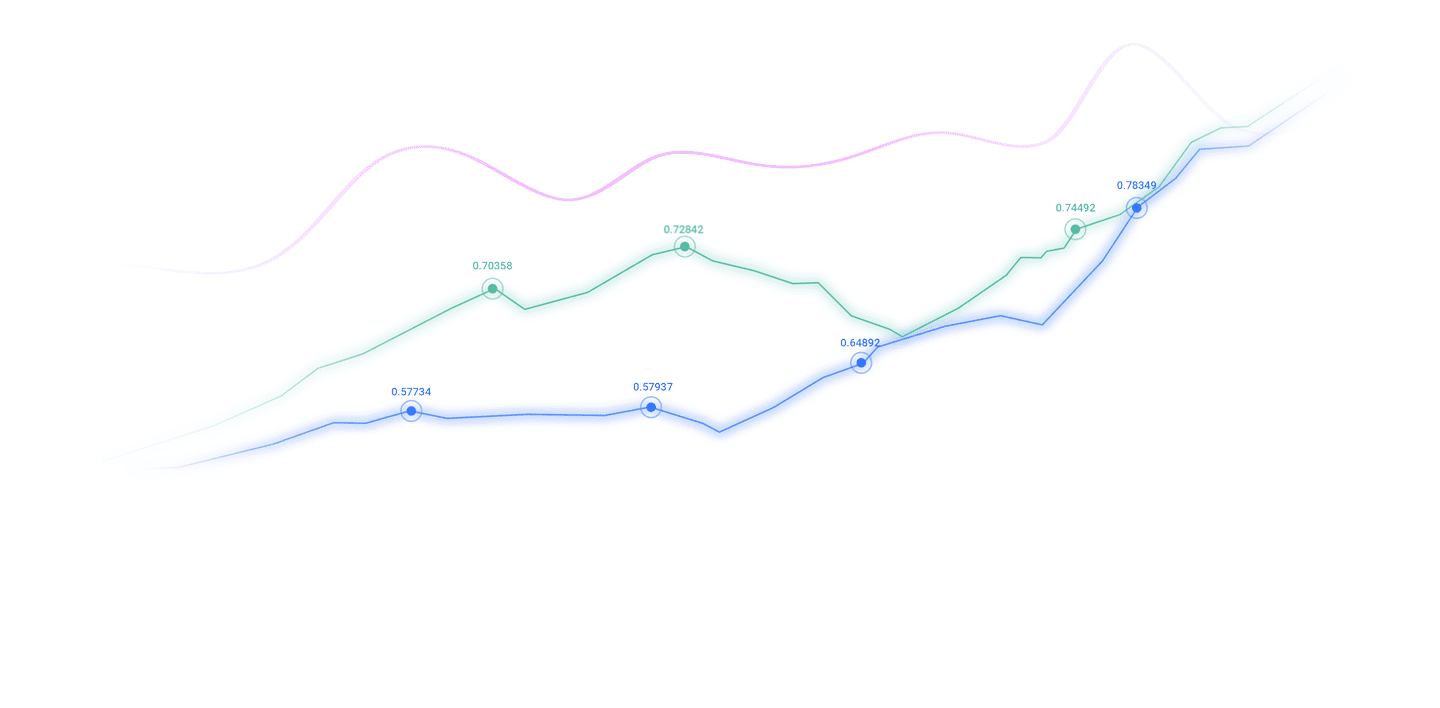Trusted by over 15 Million Traders
The Most Awarded Broker
for a Reason
CATEGORIES
News
- 【XM Market Analysis】--USD/MXN Monthly Forecast: February 2025
- 【XM Group】--USD/CAD Forecast: Friday's Critical Moves
- 【XM Market Review】--EUR/USD Forex Signal: Slammed Amid Germany and France Woes
- 【XM Market Analysis】--EUR/USD Analysis: Slips Amid Renewed USD Strength
- 【XM Forex】--USD/CAD Forecast: US Dollar Continues to Cause Chaos Against Loonie
market analysis
The weakness of non-US currencies resonates with short-selling rebound. Can the strong US dollar break through key suppression?
Wonderful Introduction:
Green life is full of hope, beautiful fantasy, hope for the future, and the ideal of longing is the green of life. The road we are going tomorrow is green, just like the grass on the wilderness, releasing the vitality of life.
Hello everyone, today XM Foreign Exchange will bring you "[XM Official Website]: Non-US currency weakness resonates with short cover, can the strong US dollar break through key suppression?" Hope it will be helpful to you! The original content is as follows:
On Wednesday (September 3), the US dollar index surged and fell, and once hit a weekly high intraday high and rose 0.33%. After that, the rapid decline may be caused by the rebound of short US dollar funds after being squeezed. As of 16:26, trading at 98.30 rose 0.02%. The US dollar index rose 0.66% on Tuesday, affected by the shift in the Bank of Japan's interest rate policy and the catalyzing of the soaring UK 30-year Treasury bond interest rate, the US dollar appreciated against a basket of currencies.
British bond interest rates hit a 25-year high, and the pound fell sharply to boost the US dollar.
The sharp fluctuations in the UK bond market have become the key driver to suppress the pound and boost the US dollar. The British bond market showed a selling wave on Tuesday, with long-term Treasury yields climbing to a peak of 5.72% since 1998, with a 10-year yield of 4.81%. The pound fell simultaneously against the US dollar and closed down 1.14% and hit a low of 1.3339. The market expressed concerns about the worsening fiscal situation in the UK, and the pound bottomed out against the dollar during the European session on Wednesday and is currently flat.
Ray Attrill, head of foreign exchange research at National Australia Bank (NAB), pointed out that the fiscal deterioration of many European countries, but the UK market responded even more violently: First, the risk memory of the turbulent "mini budget" in 2022 is still there, and the second is that the autumn budget report is approaching, and the market lacks confidence in the British government's ability to control deficits. The soaring long-term bond interest rates weaken the attractiveness of pound assets, and funds withdraw from pound pound and turn to the US dollar, providing direct support for the US dollar index.
The Bank of Japan's policy shift is unclear, and the weak yen magnifies the strength of the dollar.
The political uncertainty of Japan and the possible shift in the central bank's policy path have caused the yen to continue to weaken, further strengthening the upward trend of the dollar. The dollar continued Tuesday's gains against the yen on Wednesday, up 0.27 as of 15:47, trading around 148.80, and the exchange rate closed up 0.8% on Tuesday.
Prime Minister Shigeru Ishiba's confidant Hiro Moriyama claimed that he was about to resign, which triggered market discussions on the stability of Japan's political arena. Hiro Moriyama's identity is "Central Secretary-General of the Japanese Liberal Democratic Party" and is a core position of real power within the party. His resignation will make Shigeru Ishiba, who has already faced "resignation pressure" due to election defeat, and his position as prime minister is even more unstable.
Soviet Bank KitJuckes pointed out that "political uncertainty and expectations of Prime Minister's resignation directly weaken the yen", and the potential successor, the high market, early seedlings tend to be low interest rates, which means that the interest rate spread between Japan and the United States is difficult to narrow (the current yield of US two-year bonds is 3.65%, and the daily maintains a negative interest rate), and the spread advantage drives funds to "sell the yen and buy the US dollar."
At the same time, Bank of Japan Vice Governor Ryoaki Izumiino pointed out in the latest meeting that before the central bank launches the next round of interest rate hikes, it will conduct a prudent assessment of the effectiveness of the economic outlook forecast and existing risks. The above statement clearly conveys the signal that "the Bank of Japan is not ready for interest rate hikes in the short term", or it can be understood as the Bank of Japan is in a state of being able to advance or retreat regardless of whether the political arena changes.
It is worth noting that although Bank of Japan President Kazuo Ueda and Shigeru Ishiba talked about the foreign exchange market when they met, they did not send out signals of tightening or intervention. The market voted with its feet in the face of uncertainty, and the yen fell.
Non-US currencies have generally been weak in the past two days, and non-agricultural data has become the key to the US dollar in the future
Other non-US currencies are under pressure simultaneously: the euro rose slightly against the US dollar to 1.1651, down 0.6% the previous day; the New York dollar fell flat to 0.5861; the Australian dollar remained flat at 0.6520, still in a weak quake range.
The market focus turns to this week's US non-farm employment report, which will directly affect the Federal Reserve's policy expectations: if the employment data is sufficiently resilient, it may weaken the expectation of interest rate cuts this month, consolidating the advantage of the US dollar interest rate spread; if the data is weak, it may suppress the US dollar in the short term.
But in the short term, the resonance effect of the soaring British bond interest rates and the vague Bank of Japan policy remains, and the strong pattern of the US dollar index may be maintained in the short term.
At the same time, CMEFedWatch interest rate futures showed that the Federal Reserve cut interest rates by 25 basis points in September was as high as 89.7%, which would cause traders who had bet on the decline of the US dollar index to encounter short squeezes after the sudden rise of the US dollar index, and then the short positions were filled, causing the US dollar index to fluctuate widely.
In addition, the global long-term bond yields rose (the US 30-year bond yield nearly 5%) further expanded the interest rate gap between the US and other economies. The US dollar's "high yield + safe-haven" attributes were highlighted, and capital inflows helped the index strengthen.
Technical Analysis
The US dollar index temporarily resolved the crisis of head and shoulders. After the exchange rate crossed the 10, 20, and 30-day moving averages and the head and shoulders top and necklines, it formed effective support for the US dollar around 98.00, but overall it was in a downward trend. The 99.00 integer mark (the breakout price of the Dusk Star on August 1) and 99.36 (the 50% quantile of the Dusk Star) are important pressure levels, such asIf it can break through, the US dollar index will turn bullish.
The above content is all about "[XM official website]: The weakness of non-US currencies resonates with short-selling rebound, can the strong US dollar break through key suppression?", which was carefully www.xmniubi.compiled and edited by the editor of XM Forex. I hope it will be helpful to your trading! Thanks for the support!
Due to the author's limited ability and time constraints, some content in the article still needs to be discussed and studied in depth. Therefore, in the future, the author will conduct extended research and discussion on the following issues:
Disclaimers: XM Group only provides execution services and access permissions for online trading platforms, and allows individuals to view and/or use the website or the content provided on the website, but has no intention of making any changes or extensions, nor will it change or extend its services and access permissions. All access and usage permissions will be subject to the following terms and conditions: (i) Terms and conditions; (ii) Risk warning; And (iii) a complete disclaimer. Please note that all information provided on the website is for general informational purposes only. In addition, the content of all XM online trading platforms does not constitute, and cannot be used for any unauthorized financial market trading invitations and/or invitations. Financial market transactions pose significant risks to your investment capital.
All materials published on online trading platforms are only intended for educational/informational purposes and do not include or should be considered for financial, investment tax, or trading related consulting and advice, or transaction price records, or any financial product or non invitation related trading offers or invitations.
All content provided by XM and third-party suppliers on this website, including opinions, news, research, analysis, prices, other information, and third-party website links, remains unchanged and is provided as general market commentary rather than investment advice. All materials published on online trading platforms are only for educational/informational purposes and do not include or should be considered as applicable to financial, investment tax, or trading related advice and recommendations, or transaction price records, or any financial product or non invitation related financial offers or invitations. Please ensure that you have read and fully understood the information on XM's non independent investment research tips and risk warnings. For more details, please click here


































































































